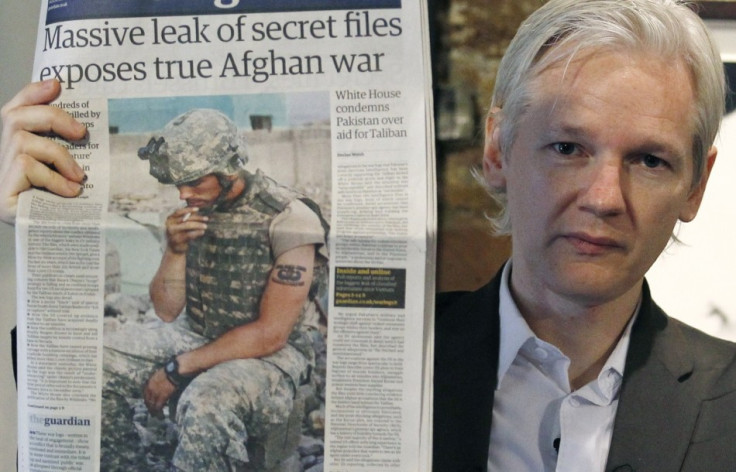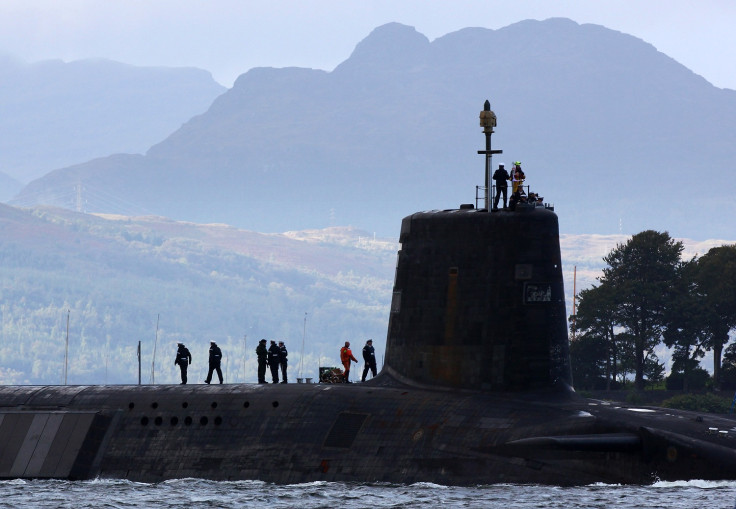From the Panama Papers to Edward Snowden: Data leaks that shook the world

In what has been branded an 'unprecedented' leak of sensitive information, the release of the so-called Panama Papers consist of 2.6 terabytes and over 11 million records of compromised confidential information from law firm Mossack Fonseca detailing suspected cases of money laundering and tax avoidance schemes. First exposed by German newspaper Süddeutsche Zeitung and shared with more than 100 media outlets across the globe, the leaked documents have had a monumental impact that has potentially implicated a slew of wealthy and powerful individuals - from world leaders to footballers. However, such large-scale breaches of secrecy have long been able to shake up the establishment. IBTimes UK takes a retrospective look at some of the most significant leaks of sensitive information over the past decade.
The Edward Snowden documents: Exposing the surveillance state

Edward Snowden was a former contractor for the US government, who in 2013 leaked a trove of secret classified files about the vast surveillance apparatus used by intelligence agencies including the NSA, CIA, FBI and Britain's GCHQ. The whistleblower quickly fled to Hong Kong and made contact with journalists from The Guardian and filmmaker Laura Poitras – who each painstakingly documented the emerging story in real-time. With each fresh report more damaging than the previous, Snowden effectively single-handedly exposed spy programmes including Prism and XKeyscore which were both scooping up massive amounts of communications data without targeted warrants.
Other revelations included how US spies snooped on foreign leaders, the close links between the NSA and GCHQ alongside ongoing efforts to crack encryption protocols. In the fallout from the release of the documents, Snowden was left stranded in Russia after the US revoked his passport as he beat a hasty retreat across the globe. Snowden, who still lives in Russia under asylum, is now an active participant on Twitter and regularly makes appearances at security panels and conferences.
Cablegate: A diplomatic nightmare

The leak of over 250,000 US diplomatic cables, now dubbed Cablegate, began on 28 November 2010 after WikiLeaks started to release batches of classified government cables sent to the US State Department from embassies and diplomatic missions across the globe. The cables – which WikiLeaks presented in an easily searchable format for all to browse – contained 251,287 records and was obtained by then-solider Chelsea Manning who was later sentenced to over 30 years imprisonment for her part in the leak. Upon analysis, the cables contained harsh criticism by US embassy staff of other governments around the world – including China and Russia. Essentially, the release tore down the façade of good relations and left the US administration in a state of embarrassment. "By releasing stolen and classified documents, WikiLeaks has put at risk not only the cause of human rights but also the lives and work of these individuals," claimed the White House in a statement post-leak.
The Afghanistan War Logs: A military in ruins

In a joint collaborative project again featuring WikiLeaks, The Guardian, the New York Times and Der Spiegel, the Afghanistan War Logs disclosure contained over 90,000 records and intelligence reports outlining in graphic and unfiltered detail the state of military operations in Afghanistan between January 2004 and December 2009. At the time, WikiLeaks founder Julian Assange said the leak had the potential to be more significant than the Pentagon Papers, famously leaked in 1971. "There doesn't seem to be an equivalent disclosure made during the course of the war when it might have some effect. The nearest equivalent is perhaps the Pentagon Papers released by Daniel Ellsberg in the 1970s which was about 10,000 papers - but that was already four years-old when it was released," he said. Much like the aforementioned 'Cablegate' release, the White House appeared stunned and embarrassed by the security breach. "WikiLeaks made no effort to contact the US government about these documents, which may contain information that endanger the lives of Americans, our partners, and local populations who co-operate with us," it complained.
The Drone Papers: Flights of fancy

The in-depth investigation by The Intercept (launched in part by Snowden-linked journalist Glenn Greenwald) involved a number of classified documents leaked by a mysterious source from within the intelligence community who was reportedly inspired by the actions of Edward Snowden. The Drone Papers included pages from a 2013 study of the US drone programme. A number of major human rights organisations alleged the investigation raised concerns about violations by the US government's use of unmanned vehicles to target terrorists. According to The Intercept, the secret cache of documents outlined the inner workings of the US military's 'kill/capture operations' between 2011 and 2013. Reacting to the release, Edward Snowden wrote on Twitter: "In an astonishing act of civil courage, one American just shattered an unspeakable lie. When we look back on today, we will find the most important national security story of the year."
The Trident whistleblower leak: Dangers at sea

A Belfast-born Royal Navy specialist turned whistleblower called William McNeilly released an 18-page report in 2015 that alleged a series of security blunders at the Trident nuclear deterrent fleet which carries missiles and warheads and is controlled from a base in Scotland, UK. In candid detail, McNeilly claimed security at the base was a "disaster waiting to happen". He described security credentials going unchecked, failures in testing whether missiles could be safely launched and a slew of fire concerns due to conditions at the site. "If you've been through airport security after 9/11 you'll have seen how thorough the security is nowadays. If airport security and nuclear weapon security were both compared to prisons, the airport would be Alcatraz and base security would be house arrest," he wrote in the lengthy document. Following a brief time on the run, McNeilly eventually handed himself over to authorities and was later discharged from the Navy once the dust had settled.
Church of Scientology 'Bibles': How to reach nirvana

In another WikiLeaks release, an unknown source handed over the full 612-page "collected secret 'bibles' of Scientology" in 2008 that contained intimate details of the inner workings of the much-criticised religious organisation. The files – which would have usually cost a hefty fee to 'earn' within the church's progression system, exposed a number of 'levels' that members of the group must go through to reach enlightenment. Much of the content was reportedly written by founder L. Rob Hubbard and lawyers for the sect attempted to force WikiLeaks to take the information offline – which it duly refused to do. "The church put private investigators on me and then of course attempted to sue us," said Assange after the leak. "They failed, and this was one of the first times the Church of Scientology failed. This really broke the back of its scam before the public and encouraged others to not be scared of such litigation."
Ashley Madison database: Love cheats exposed online

The year 2015 was a record period for data breaches and cyberattacks – however none grabbed the public attention quite as much as the leaking of millions of records of people signed up to Ashley Madison, a self-proclaimed adultery website. After a hacking group dubbed The Impact Team breached the database of the website and stole over 60 gigabytes worth of data, confidential dumps of information quickly started to appear online which led to a frenzy of concerned users worried about being publicly outed as a member of the website.
In a message alongside the initial breach, the hackers accused Avid Life Media, parent company of Ashley Madison, of a number of 'deceptive' practices including charging money for a faulty profile delete function. "We have explained the fraud, deceit, and stupidity of ALM and their members. Now everyone gets to see their data...Too bad for ALM, you promised secrecy but didn't deliver," stated the warning. While many of the leaks on this list were aimed at exposing information for the public good, the hack at Ashley Madison showed just what can happen if a hacker instead chooses to act out of malice.
There are so many large-scale leaks on an annual basis that it would be nearly impossible to list everything in one place. Other notable incidents would include the WikiLeaks 'Global Intelligence Files', the revelations from banking giant HSBC, the release of Sarah Palin's personal emails, the recent release of an alleged Islamic State member directory or the revelations stemming from Hacking Team. What did we miss? You can sound off in the comments below or contact: j.murdock@ibtimes.co.uk with your thoughts.
© Copyright IBTimes 2025. All rights reserved.






















